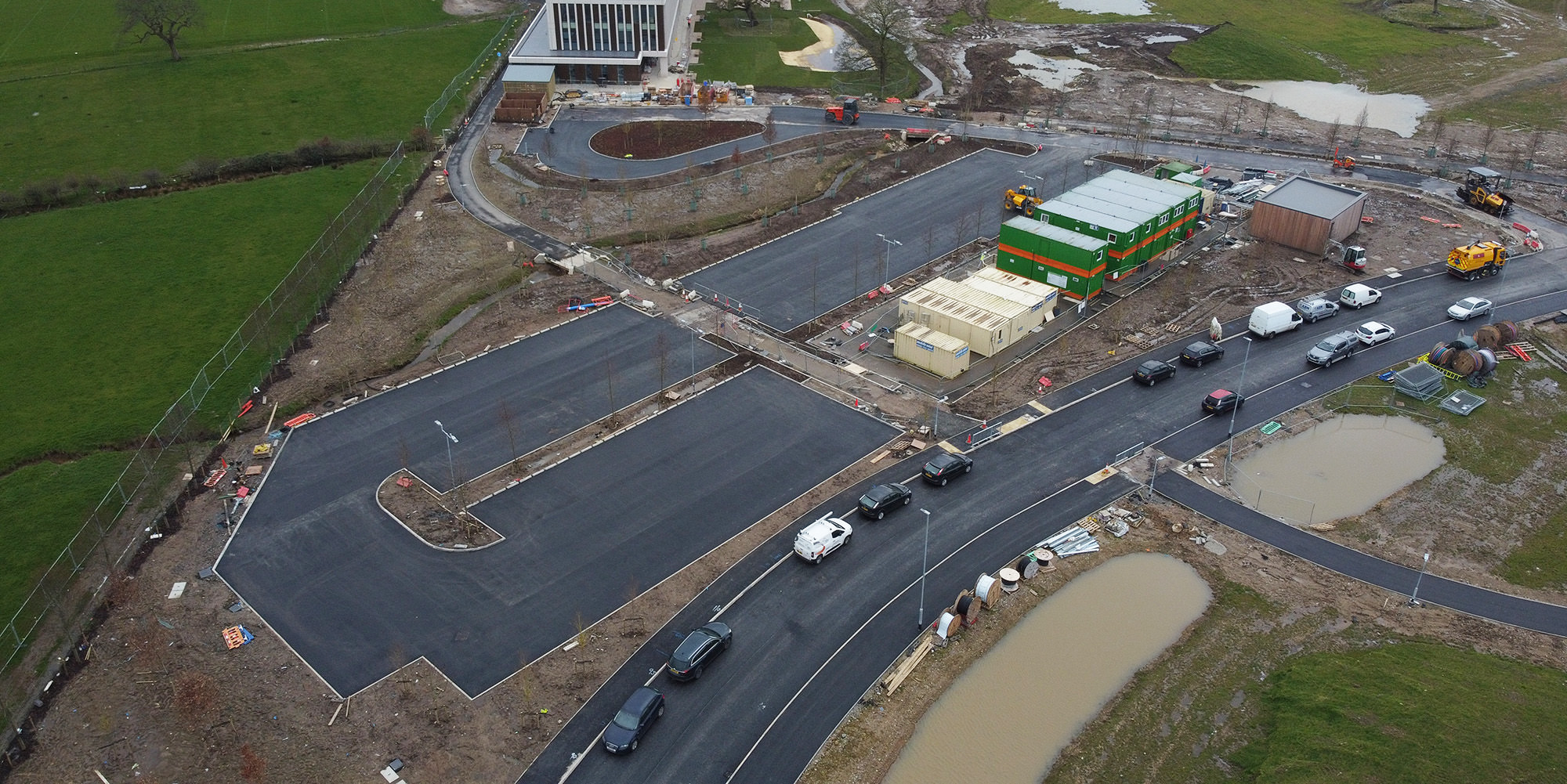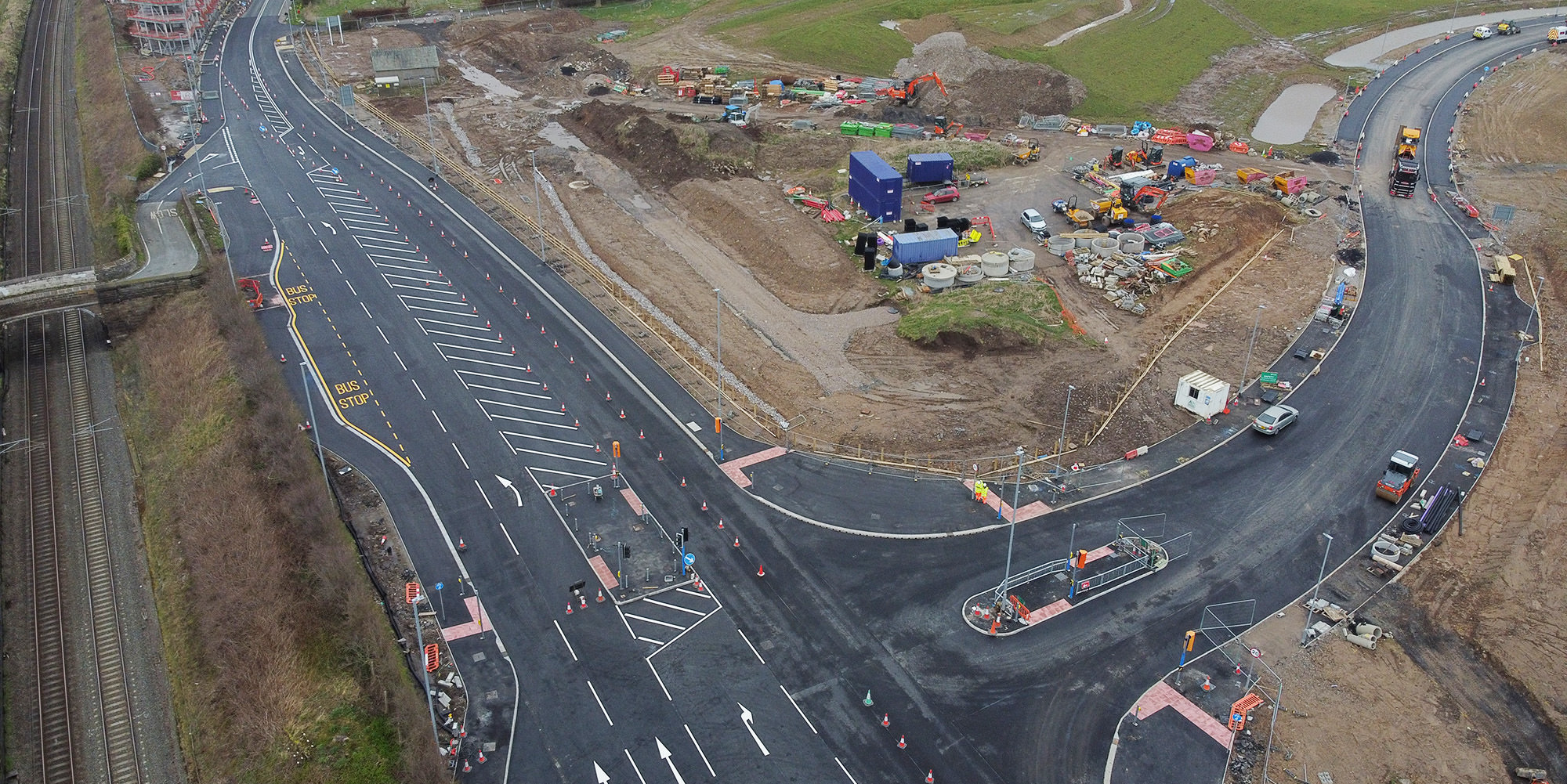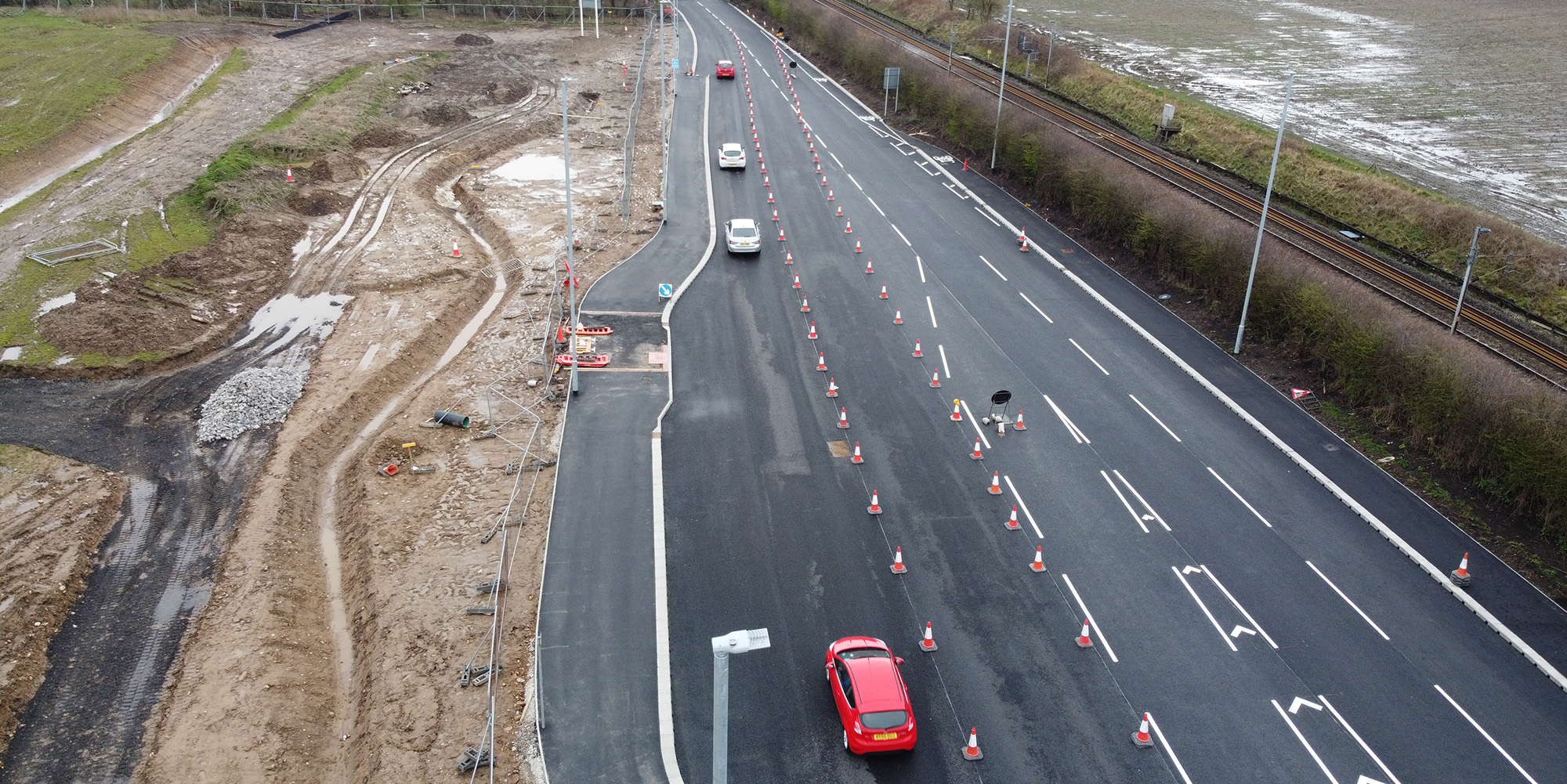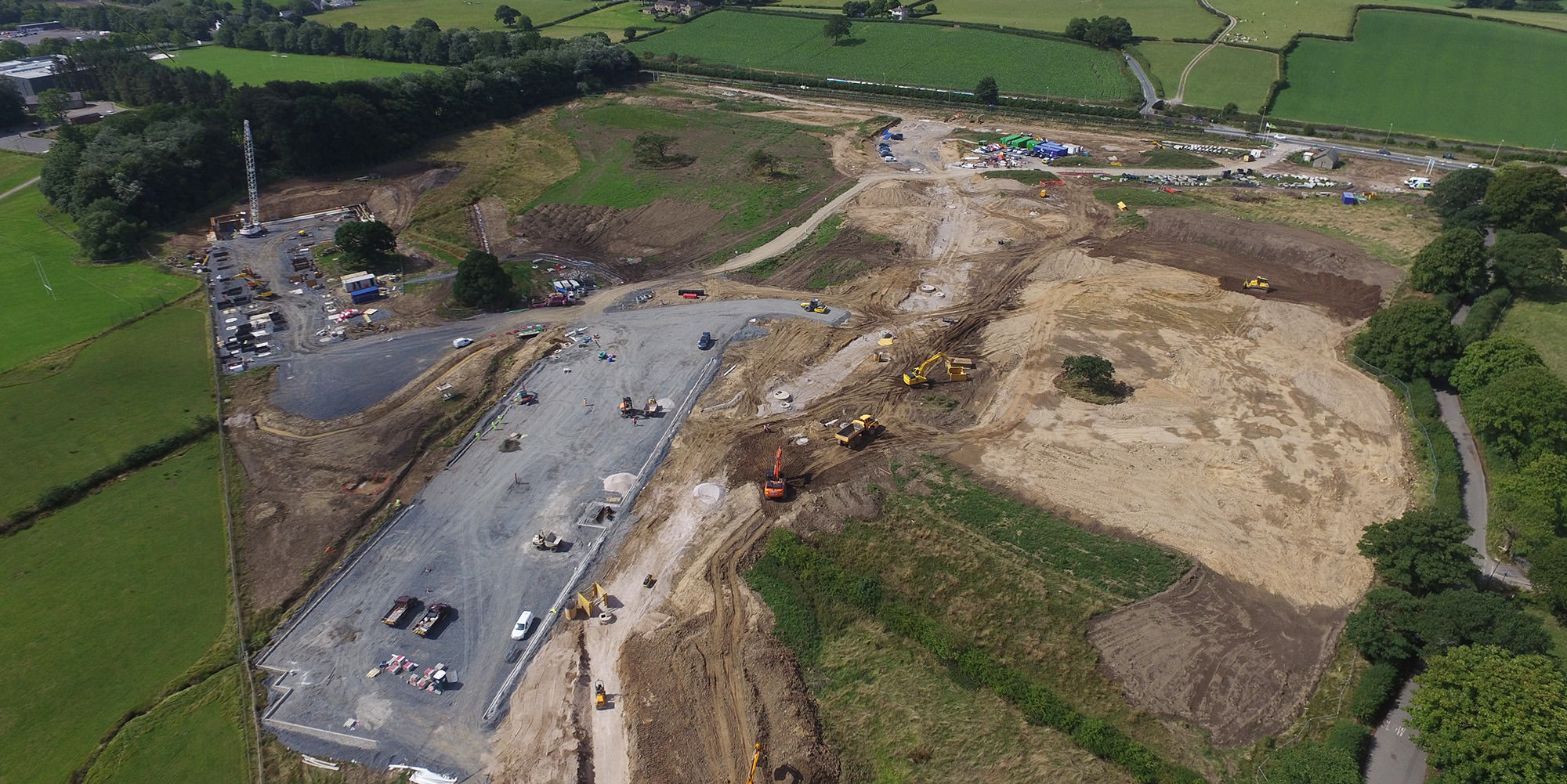We were contracted by BAM to carry out Section 278, 38 and drainage works, as part of a multimillion-pound scheme for a new Health Innovation Campus at Lancaster University. The scheme involved; construction of a new estate road, access road, car park, building formation and a new drainage system, in addition to a new traffic-controlled junction that connected the new campus to the A6. These works included widening the existing 2 lane road to 6 lanes with accelerating and decelerating lanes.
Through preliminary discussions with our principal contractor BAM and Lancaster University, the priority was to deliver all the works on schedule. With a project of this scale, any delays to our main works would create a risk of disrupting other contractors, causing a domino effect and potentially affecting the whole scheme.
Our works on the campus site were divided into 2 phases. Phase 1 involved the drainage works, bulk earthworks and constructing the temporary access road that would be used by other contractors. Our drainage works included, stormwater attenuation, sustainable drainage systems (which required a new product trial for Polypipe 1050mm diameter stormwater) culvert installation, watercourse diversion and an open water swale construction. For phase 2, we were to return to site after the main building works were finished to finalise surfacing works to the new car park.
Throughout the works on phase 1, we were also undertaking the construction of the new junction works on the A6. This involved, ground improvement, utility diversions, traffic signal installations, street lighting installation and landscaping. Poor ground conditions and ground water ingress required a re-design of the pavement construction to be developed whilst construction activities progressed.
A flexible approach was required to make sure the unforeseen changes could be absorbed into the programme without interfering with the other works and contractors on site. Maintaining traffic flow was essential on such a busy road and we put a complex traffic management system in place in to significantly reduce disruption. The works were programmed in such a way that we could build sections of the new road offline whilst diverting traffic onto existing parts of the road through temporary traffic lighting. This allowed us to also maintain access to Lancaster University for students and staff, minimising disturbance to their normal routines.
As part of the campus BREAMM registration, 100% of the car park, access road and visitor turning circle had to be constructed using recycled materials. This meant that all spoil and debris had to be retained on site and re-used in earthworks remodelling or had to be recycled. We retained 12,000m2 of materials on site and aesthetically incorporated it into the natural surroundings through soft landscaping. By remodelling the area, we drastically reduced wastage and took very little materials to the tip. During excavation, we ensured that all tree protection orders were respected, and we took extra caution to leave root zones clear, as well as diverting water away to avoid potential flooding.
We understood the importance of adhering to our given schedule and cooperated with other contractors from day one to ensure we were meeting the client’s requirements. Due to unforeseen circumstances with cable diversions, our work was delayed by 12 months. By working through the harsher winter months, we successfully delivered the scheme to the revised programme.








